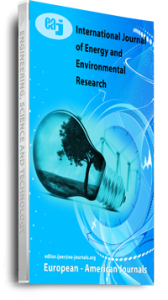Globally buildings are responsible for approximately 40% of the total world annual energy consumption. Most of this energy is for the provision of lighting, heating, cooling and air conditioning. An increase in awareness of the environmental impact of CO2, NOx and CFCs emissions triggered a renewed interest in environmentally friendly cooling and heating technologies. Under the 1997 Montreal Protocol, governments agreed to phase out chemicals used as refrigerants that have the potential to destroy stratospheric ozone. It was therefore considered desirable to reduce energy consumption in order to decrease the rate of depletion of world energy reserves as well as the pollution to the environment. One way of reducing building energy consumption is to design buildings, which are more efficient in their use of energy for heating, lighting, cooling and ventilation. Passive measures, particularly natural or hybrid ventilation rather than air-conditioning, can dramatically reduce primary energy consumption. Therefore, promoting innovative renewable energy applications including the ground source energy may contribute to preservation of the ecosystem by reducing emissions at local and global levels. This will also contribute to the amelioration of environmental conditions by replacing conventional fuels with renewable energies that produce no air pollution or the greenhouse gases (GHGs). An approach is needed to integrate renewable energies in a way to achieve high building performance standards. However, because renewable energy sources are stochastic and geographically diffuse, their ability to match demand is determined by the adoption of one of the following two approaches: the utilisation of a capture area greater than that occupied by the community to be supplied, or the reduction of the community’s energy demands to a level commensurate with the locally available renewable resources. Ground source heat pump (GSHP) systems (also referred to as geothermal heat pump systems, earth-energy systems and GeoExchange systems) have received considerable attention in recent decades as an alternative energy source for residential and commercial space heating and cooling applications. The GSHP applications are one of three categories of geothermal energy resources as defined by ASHRAE and include high-temperature (>150°C) for electric power production, intermediate temperature (<150°C) for direct-use applications and GSHP applications (generally (<32°C). The GSHP applications are distinguished from the others by the fact that they operate at relatively low temperatures.
Keywords: Built Environment, Ground Source, Heat Pump, Renewable Energy Technology

